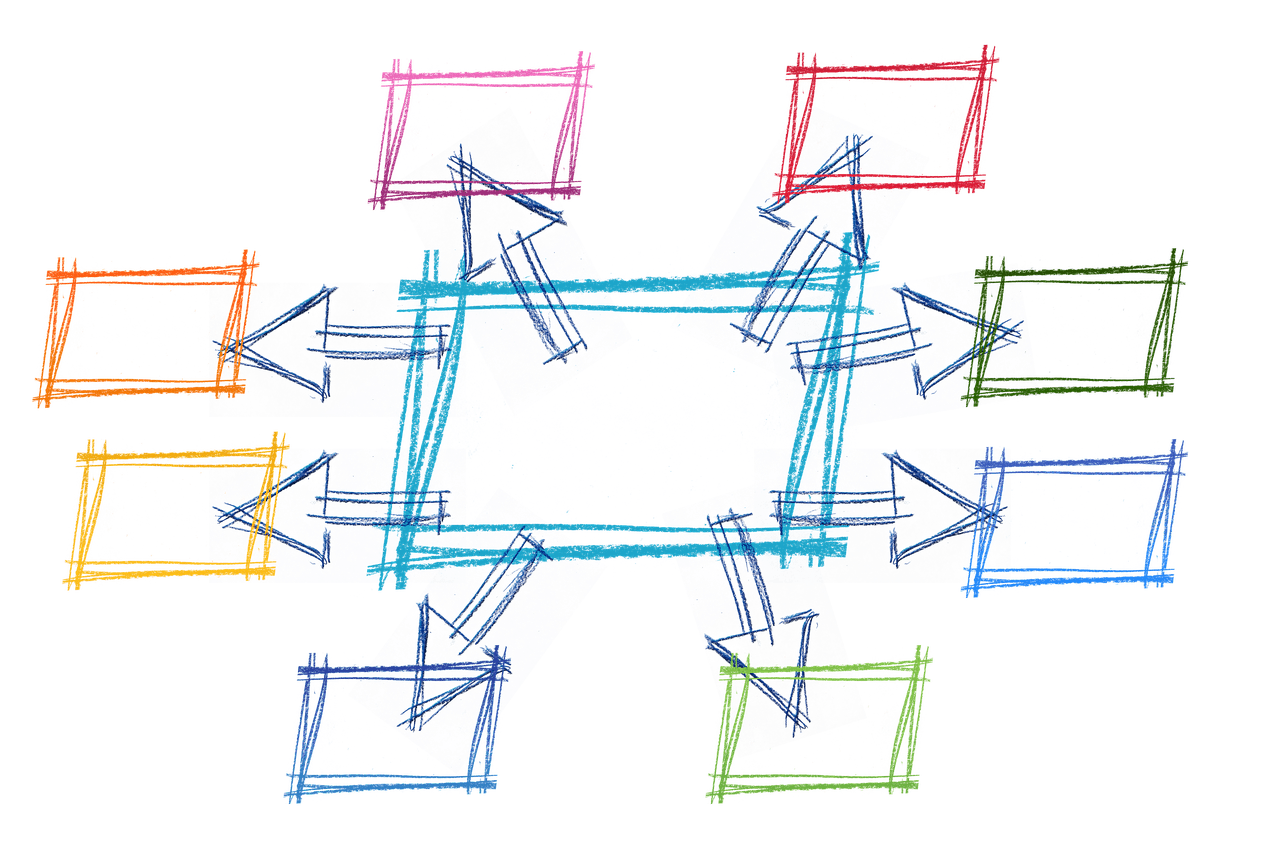Let’s see what a project roadmap is before going into the detailed explanation.
A roadmap, also called a project roadmap, is a strategic business planning tool mostly used to outline the future vision of a system, service, or product.
CONTENT INDEX
This will show what changes and developments are needed to get there and will display the outputs that are expected to be delivered in a specific time period.
A project roadmap is often used in an organization that follows the Agile methodology and will help stakeholders visualize where and when planned changes are likely to occur.
Why is a roadmap important?
If you are wondering why a project roadmap is so important, we will try to explain it with an example.
Imagine working on a puzzle: We know that in some way the pieces are all part of a whole, but we are not sure where to focus on initially. All the pieces seem random at the beginning and therefore slowly, but surely, a strategy is being implemented. An attack plan to solve the puzzle.
Some could start by putting all the individual pieces of the frame in place, others could start from the center. As you get more and more pieces in their place, you start to see the full picture.
Now, let’s imagine working on the puzzle with other people: How can you be sure that all are aligned and working towards the same goal?
This is essentially why a project roadmap is important.
Unpacking the puzzle into smaller areas to focus on allows you to facilitate and speed up the process, creating a solid foundation for tracking progress as you go.

The roadmap is essentially the action strategy. By setting up a strategy, you should be able to reach the final result more quickly than with a random or unplanned actions.
How do you create a project roadmap?
Planning a roadmap is a continuous process and you have to take the time to define it and update it. The roadmap is constantly evolving as the aspect of the future vision of the project evolves. It is thanks to this evolution that we should minimize those situations of “because I didn’t know” that can do so much damage to the final result.
There are a series of steps you can follow to define a project roadmap.
Identify interested parties
Starting from scratch, identifying the main end users and stakeholders is crucial. By knowing who to contact, it is possible to research what is important for the project activity.
Establish business priorities
Some priorities will be so important and critical for the organization that their timing will already be set. For everything else, it is possible to be creative.
An idea is to organize a meeting with the stakeholders and in this session encourage people to be open and transparent, keeping everyone focused on what is best for the organization in general and not on individual departments or teams.
The aim here is to obtain general coordination on what to consider as a priority based on a descending order. By involving stakeholders in defining the project roadmap, it is possible to actively integrate them into the future vision.
View the project roadmap
The roadmaps can be represented in different dimensions and formats, covering the themes, priorities, and goals that are intended to be achieved.
As mentioned above, these plans are always subject to change, but the purpose is to make them simple enough to adjust and change over time.
The important thing is always to have a good visualization of the whole; therefore, also the imagination of the PM is important. For example, a procedure that could be useful for displaying a project roadmap, is the possibility to group the elements related to a theme in a column and to scroll the time scale in the upper part. The individual results – or mini-projects – will thus become the intermediate cells, and the visualization of the “to do” tasks will be simple.
If you use software such as Twproject, it is even easier to show these graphical views. One example of this is the new Gantt view in Twproject, which allows ToDo lists to be displayed alongside the various project phases. This functionality is very useful during project meetings, to even better outline the roadmap and share it with the whole team.
Communication
After building a project roadmap and sharing it, you can analyse it with the main stakeholders in order to get the final approval.
Also, you can make further changes based on the suggestions received. Moreover, ensuring that everyone has adhered to the process and the vision, will mean that that the project manager and the team can concentrate and focus their efforts only on delivery.
Renewing the roadmap regularly or, in any case, comparing the project planning with the progress of the project on a regular basis remains a necessary operation.
Project roadmap: Conclusions
To conclude, here is a schematic process that can be used to trace an efficient project roadmap:
- Set the timeline
a. How far do you want to arrive with the roadmap (1 month, 6 months, 1 year, etc.)?
b. Make sure this is a significant period of time, i.e. don’t go too far in the future. - Establish workflows
a. Where are the areas of focus: On resources or budget? Knowing this helps to communicate to interested parties where the activity is concentrated. - Process high-level activities within each workflow
a. Keep the level of detail low. For example: if the entire time sequence lasts 12 months, do not include activities lasting less than 1 month
b. Maintain a realistic image, this means: Do not overload any workflow. - If high-risk areas are present, add labels, such as:
a. Resource / constraint / risk issues
b. Financial issues / constraints / risks - Enter key milestones
a. In a timeline at the top of the roadmap, add indicators for important dates
b. Keep these dates realistic
c. Leave some contingency
d. If a date or milestone is indicative, it is necessary to indicate it - Clearly highlight the status of the document
a. If it is “draft”, it must be clearly labelled at the top of the document
b. Give a version number
This, of course, is just one of the possible examples in order to develop a project roadmap.
The process can vary depending on the size of the organization, depending on the priorities, and even according to the responsibilities within the company.
If you want to start building your roadmap now, you can do it easily with Twproject, an innovative software that allows you to plan your projects from scratch and offers excellent monitoring tools. You can try it free of charge for 15 days and orient your project planning to the goals you wish to achieve: Twproject will guide you in the process.




